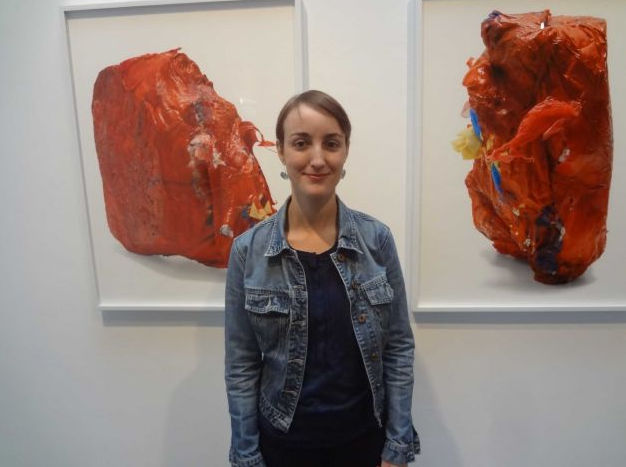In photographic series such as “Maternity Ward,” “Wired” and “At the Hour of Death,” Sarah Sudhoff deals with birth, sex and death head-on in images that include nude self-portraits shot in an abandoned hospital, arcane sexual devices used at the Kinsey Institute 60 years ago and swaths of bedding, carpet and upholstery stained with the bodily fluids of the dying.
Her work, which has a haunting beauty, is courageous and unsettling as she forces us to confront the fragility of life and its opposite side, our resiliency.
Most recently, the San Antonio artist asks us to think about what we go through to maintain life, or some semblance of health, calling into question larger issues of our humanity, our morality and our place on the planet.

For her three-month residency at Artpace, Sudhoff took her camera to an autoclave facility where medical waste is sanitized before sending it off to a landfill, or in rarer cases, shredded for recycling.
“Single Use Only” (the title refers to a phrase imprinted on many medical implements) features 10 large-scale photographs of everyday hospital detritus — the tubing, syringes, trays, IV bags and rubber gloves needed to keep us alive — in red biohazard bags after it has been heated to 250 degrees and slightly melted.
Working under difficult conditions — the heat, the smell of burning plastic, a short window to shoot a satisfying image, not to mention the initial “legwork” required to gain access — Sudhoff focuses on whole bags as well as details of the surface quality.
“This was a tough project, but it didn’t smell as bad as some of my earlier projects,” said the petite new mother, who radiates intelligence and determination. “‘At the Hour of Death’ — that was much worse.”
“Single Use Only” actually grew out of that series from a couple years ago; it led Sudhoff to begin thinking about what she calls “the residue of life.”
In images with titles such as “Clean Waste Study” and “Organic/Inorganic,” the dominant color is red, not from blood or body parts, but from the bags themselves, which the artist says “sort of take on another life.” The visual comparisons to healthy organs and the bodily topography of skin — wrinkled, pulled tight — are inescapable.
“For me, this project was about the history of the material — who had it touched, what had it been used for, where was it going,” Sudhoff says. “I tried to put myself in the role of a researcher asking, ‘What can we do with medical waste?’”
Using ash from incinerated waste, Sudhoff created a concrete seating panel for a bench in the center of the gallery space, a place to sit and contemplate the surrounding images, which are alternately disturbing and comforting.
“There are so many political implications in this work,” said guest curator Heidi Zuckerman Jacobson of the Art Aspen Museum. “You are seeing things about our culture that you haven’t noticed before.”
It’s estimated that we generate 2.5 million tons of medical waste annually in the United States, with the cost of disposal reaching nearly $1 billion.
“It wasn’t intentional, diving into that political realm, but the implication is there,” Sudhoff says. “All of this material is used to save your life. I think it’s interesting that we’ve found ways through organ donation and transplant to recycle the body before we are able to validly recycle the items that save it.”
The International Artist-in-Residence 12.3 exhibition continues through Jan. 13 at Artpace, 445 N. Main Ave. The show, which has a photographic theme, also features new work by Tel Aviv artist Dor Guez, who focuses on the history of the Christian Palestinian community in “40 Days,” and Los Angeles artist David Benjamin Sherry, who has created an artificial landscape in “Earth Changes” with color-tinted photographs of Big Bend and dyed sculptural boulders. Call 210-212-4900.
Original Link: http://www.mysanantonio.com/entertainment/visual_arts/article/Artist-s-works-explore-the-residue-of-life-4067750.php#ixzz2Dd22jBlg
